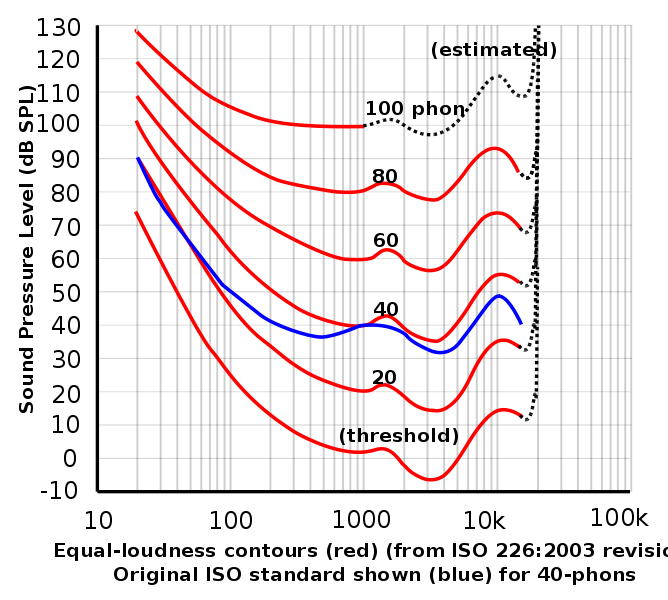Yo, twist!
From one of my links above:
…The reason for this is that loudness increases approximately three times for every bel (or 10 decibels). So 30 decibels is three times as loud as 20 decibels. 40 decibels is three times as loud as 30 decibels.
Yo, twist!
From one of my links above:
…The reason for this is that loudness increases approximately three times for every bel (or 10 decibels). So 30 decibels is three times as loud as 20 decibels. 40 decibels is three times as loud as 30 decibels.
yep, That sounds about right. Thanks
There were two five gallon tanks behind the Plexiglas sign that read HornBlasters.com. The Marauder has a deep trunk shelf, about 2 feet, behind the rear seats. The Plexiglas area is just a wall to make it look nice.
On the topic of deciBels, every 3 deciBels is roughly twice the Sound Pressure Level (SPL measured in dB); every 10dB is 10 times the SPL. So, a horn sounding as loud as 152dB produces twice as much SPL as a horn at 149dB. (Loudness is subjective measurement; so SPL is the accurate measurement.)
Bels are log(10). Basically, this means they count the number of decimal places in a number. e.g. log(10) 100 = 2, log(10) 1000 = 3, log(10) 10000 = 4.
A deciBel is a tenth of a Bel; so if you wanted to work out the math it would go something like this: (^ denotes exponent)
Formula: 10^(dB / 10)
10dB = 10^(10/10) = 10^1 = 10
13dB = 10^(13/10) = 10^1.3 = 19.95
16dB = 10^(16/10) = 10^1.6 = 39.81
19dB = 10^(19/10) = 10^1.9 = 79.43
20dB = 10^(20/10) = 10^2 = 100
23dB = 10^(23/10) = 10^2.3 = 199.53
26dB = 10^(26/10) = 10^2.6 = 398.11
29dB = 10^(29/10) = 10^2.9 = 794.33
30dB = 10^(30/10) = 10^3 = 1000
As you can see 30dB is not 3 times the SPL of 10dB but 100 times.
Formula: 10^((dB1/10) - (dB2/10)). dB1 being the first level, dB2 being the second.
10^(30/10 - 10/10) = 10^(3 - 1) = 10^2 = 100)
The only problem with this logarithmic scale of SPL is that human perception of loudness is subjective (varies by person), and by frequency (pitch of the sound). Here’s a chart showing the relativity of loudness across the frequency range.

This chart shows the relative SPL necessary for equal loudness across the different frequencies. So for example in the 2nd line from the bottom it takes about 45dB SPL @ 100hz to be as loud as 20dB SPL @ 2 Khz to the human ear. The human ear is more sensitive to sound across the 150hz to 10Khz range and most sensitive between 2-5Khz.
That said, train horns typically fall into the 300-500hz range; which, at higher dBs, are about the same loudness to the human ear.
Here are some average frequencies of horns we sell:
Shocker XL/HornBlasters Classic: 330hz (Deep, sounds closest to P3)
AirChime P3: 348hz (Deep)
AirChime P5: 398hz (Mid-range)
AirChime K3LA: 392hz (Mid-range, most common)
AirChime K5LA: 442hz (Mid-range)
Even more off topic: I’ve seen people advertize “train horns” at 150hz online before, which would sound nothing like an actual train horn. It would be more like a fog horn if anything, but, using your head, you might come to the conclusion that 150hz sounds a lot like a made up number. Musical notes rarely fall on even frequencies like that.
Bringing up a great point! Our horns and AirChime horns are tuned horns and play musical notes, which is why they have a harmonic and authentic sound. A lot of horns claim to be tuned, but rarely are.
I apologize for the long winded reply, but I hope this helps clarify the topic a little.
wow to much math for me
all i know is that my horns are loud and thats good enough for me
lmao haha thats great
very cool tiernan. thanks